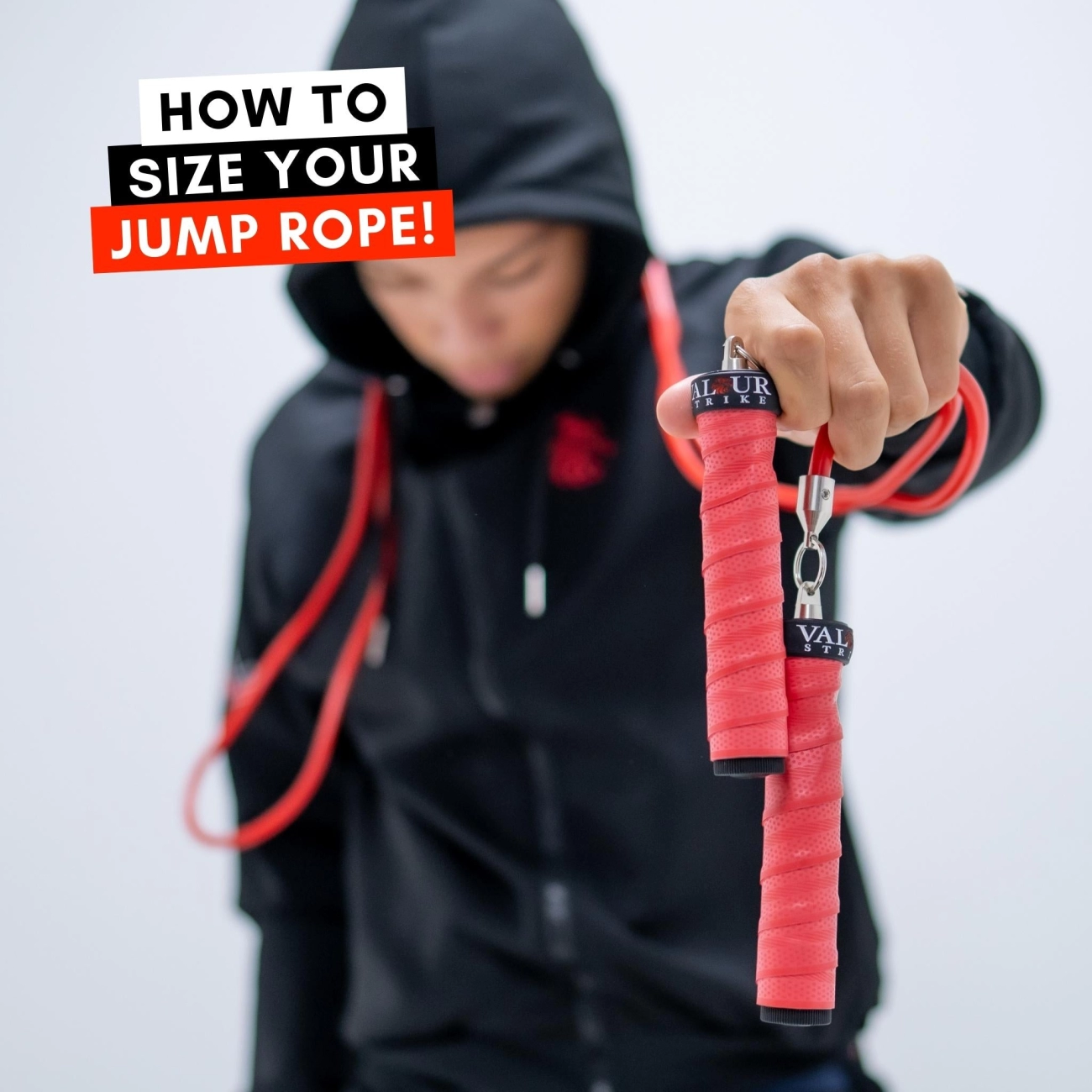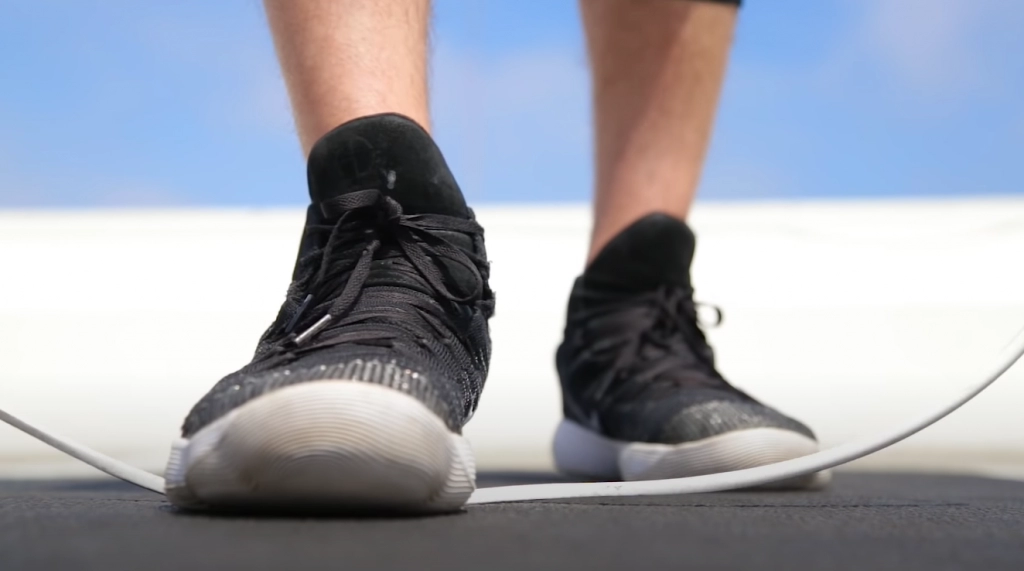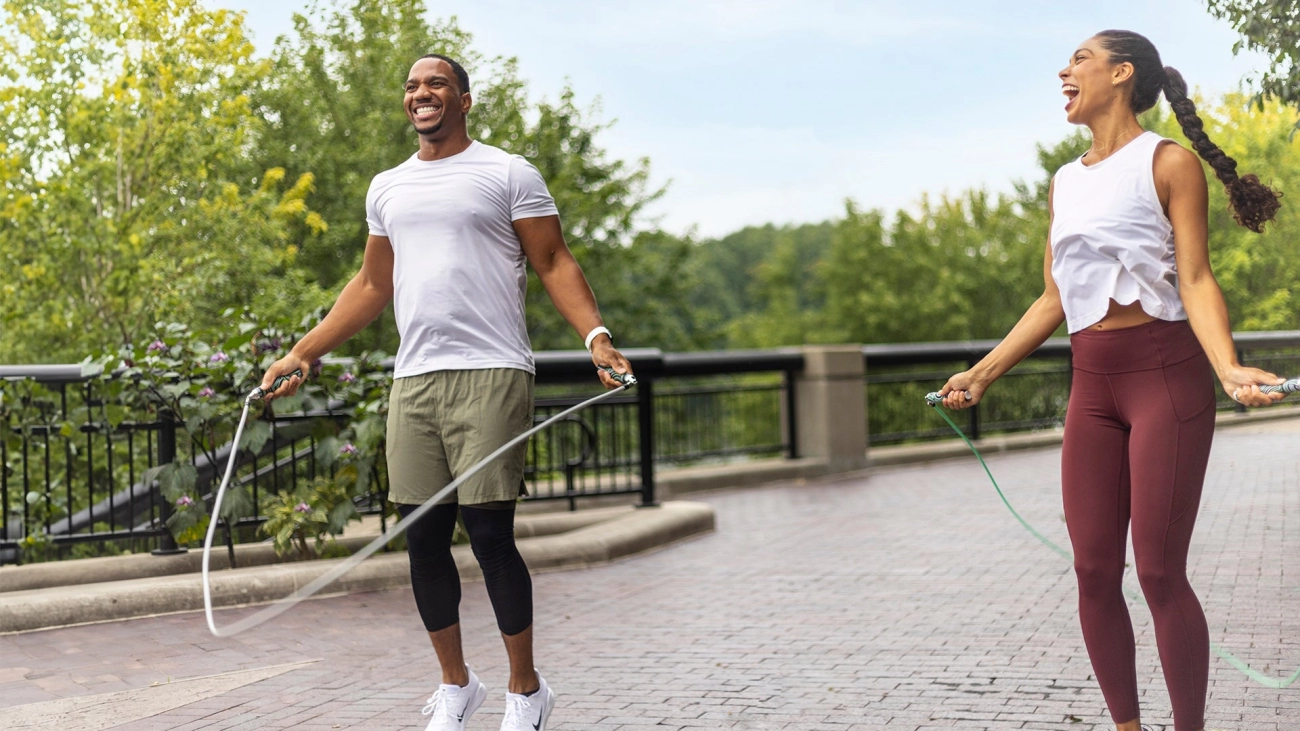Are you wondering how to measure the length of a skipping rope to get the perfect fit? Choosing the right rope length might seem simple, but it makes a huge difference in your skipping comfort, control, and performance. Whether you’re a beginner learning the basics, a parent picking the right size rope for your child, or an athlete looking to optimize your training, getting the length just right is key to skipping success.
In this guide, you’ll discover an easy, step-by-step way to measure your skipping rope length accurately. You’ll also learn why the correct rope size matters for safety and efficiency—and how to adjust ropes like a pro. Ready to jump into it? Let’s get started on finding your perfect skipping rope length!
Why Choosing the Right Skipping Rope Length Is Important
Picking the right skipping rope length is more than just a sizing detail—it directly affects your technique, performance, and safety while jumping rope. Using a rope that’s too long or too short can throw off your rhythm and even cause injury.
Impact on Skipping Technique and Performance
A properly measured rope helps you maintain a smooth, consistent jump. If the rope is too long, it can drag on the ground, slowing your pace and making it harder to time your jumps. Conversely, a rope that’s too short forces you to rush your movements, increasing the chance of tripping or missing jumps. Getting the best rope length for jumping rope helps you improve coordination, stamina, and speed—important whether you’re a beginner or an advanced jumper.
Effects on User Safety and Avoiding Tripping or Strain
Safety is a major concern with skipping ropes. The wrong rope length can cause you to trip frequently or strain your wrists, shoulders, and ankles. A rope that fits your height and jump style reduces the risk of unnecessary stress on your joints and avoids awkward movements. This is particularly true if you jump on harder surfaces, where every misstep could lead to injury.
Different Needs for Different Skill Levels and Jump Styles
Not everyone needs the same rope length. Beginners often benefit from slightly longer ropes, giving them more room to control the swing and time their jumps. Intermediate and advanced jumpers may prefer shorter ropes for faster rotations and more technical moves like double unders or crisscrosses.
Your jump style also impacts your ideal skipping rope size. Speed ropes require different lengths than weighted or beaded ropes. For example:
- Speed ropes: Tend to be a bit shorter to allow for quick, smooth rotations
- Weighted ropes: Often a little longer for a full arc
- Beaded ropes: Designed for durability and rhythm, may vary in length based on height and skill
Choosing the right rope length tailored to your skill level and jump style will enhance your workout efficiency and keep you motivated to progress.
Getting the rope length right lays the foundation for better skipping, safer workouts, and improved skills. It’s the first step toward making your jumping rope routine both effective and enjoyable.
How to Measure Your Skipping Rope Step by Step Guide

Getting the right skipping rope length starts with a simple measurement. Here’s a quick and easy way to measure your jump rope so it fits just right:
Stand on the Rope with One Foot
Place one foot firmly on the center of the rope. This helps you find the midpoint of the rope for accurate measurement.
Pull the Handles Upward
Hold both rope handles and pull them straight up along your sides. Make sure the handles reach all the way and stay vertical.
Measure the Handle Height
Look at where the top of the handles reach. Ideally, the handles should come up to somewhere between your armpits and waist depending on your skill level and style of jumping.
Use a Skipping Rope Size Chart by Height
To match your measurement with a recommended rope length, use a skipping rope size chart by height. This quick reference helps pick the best rope length for your body:
| User Height | Recommended Rope Length |
|---|---|
| Under 4’6” | 7 feet (84 inches) |
| 4’6” to 5’0” | 8 feet (96 inches) |
| 5’1” to 5’5” | 9 feet (108 inches) |
| 5’6” to 6’0” | 10 feet (120 inches) |
| Over 6’0” | 11 feet (132 inches) |
Alternatives Using a Tape Measure
If you’re shopping online or before buying your rope, use a tape measure to check lengths:
- Measure from the floor to your armpits.
- Add a few extra inches for comfort and rope swing.
- Compare your measurement to the product specs to ensure proper fit.
By following these steps and using a size chart, you’ll avoid common pitfalls like ropes that are too long or too short, which can throw off your skipping rhythm and lead to frustration. Remember, a well-measured rope improves your skipping technique and keeps you safe during your workout.
Skipping Rope Length Recommendations According to User Height

Choosing the right skipping rope length based on your height is key to a smooth and efficient workout. If the rope is too long or too short, it can throw off your rhythm, cause tripping, and even strain your body. Here’s a simple guide to help you pick the best skipping rope size for your height.
Rope Length Guide by Height
| User Height (inches) | Recommended Rope Length (feet) |
|---|---|
| Under 4’0″ | 7 ft |
| 4’0″ to 4’9″ | 8 ft |
| 4’10” to 5’4″ | 9 ft |
| 5’5″ to 5’11” | 9.5 ft |
| 6’0″ to 6’4″ | 10 ft |
| Over 6’4″ | 10.5 ft or longer |
These measurements cover most adults and teens, but smaller children usually need shorter ropes.
Special Considerations for Children vs Adults
- Children’s skipping ropes are generally lighter and shorter, designed to match smaller frames and develop coordination.
- Adults need longer ropes to allow for full arm rotation and comfortable jumps.
- For kids, it’s better to start with a slightly longer rope than too short, as they’ll grow into it without needing a quick replacement.
- Also, kids’ ropes often come with softer, safer handles to improve grip and reduce injury risks.
Tips for Different Rope Types Weighted Speed Beaded
- Weighted ropes: Usually heavier handles or cords for strength training need slightly longer lengths to avoid interference during fast rotations. Adding about 6 inches more than your standard length works well.
- Speed ropes: These are designed for fast, close-to-the-ground jumps, so the rope length should be precise—no extra slack. Stick strictly to the recommended length based on height.
- Beaded ropes: The beads add weight and affect the rope’s feel and speed. They generally follow the same length rules but expect a bit more drag, so pick a rope on the longer end of your recommended length if you’re between sizes.
Remember, these are guidelines—adjust based on your comfort and skipping style. If you’re unsure, measuring once you have the rope and making small tweaks will get you the perfect fit.
Adjusting a Skipping Rope to the Perfect Length
Getting your skipping rope length right is key for smooth, effective jumping. Whether you’ve purchased an adjustable rope from JumpRopeWholesale or a non-adjustable one, knowing how to tweak the length will make all the difference.
How to Shorten or Lengthen Adjustable Ropes from JumpRopeWholesale
Most adjustable ropes from JumpRopeWholesale come with easy-to-use mechanisms designed for quick length changes:
- Screw or Clamp Locks: These locks secure the rope inside the handle. To adjust, loosen the screws or clamps, pull the rope to your desired length, and then tighten.
- Push Button Adjusters: Some models have buttons that let you slide the rope through the handle smoothly. Press the button, adjust the length, then release to lock.
Check your rope’s manual for specifics, but these methods work for popular models like the adjustable skipping rope and others in the JumpRopeWholesale lineup.
Common Adjustment Mechanisms Explained
- Cable Ends with Set Screws: The rope cable goes through the handle and is held in place by a small set screw. Loosening it frees the cable length for adjustment.
- Plastic Clips: Some ropes use plastic clips inside the handle that can be pinched or released for length changes.
- Twist Locks: Twist to unlock the grip, adjust the rope, then twist back to lock.
These simple designs make adjusting your skipping rope length painless and precise without tools (most of the time).
DIY Tips for Non-Adjustable Ropes
Not every rope is adjustable out of the box. If you have a fixed-length rope, here’s how you can still get the perfect fit:
- Knot Method: Tie a secure knot near the handle where you want the rope shortened. This works well with PVC or cloth ropes but might affect swing speed slightly.
- Cut and Reattach Handles: For more permanent adjustment, cut the rope to size and re-secure the handles if possible. Use strong adhesive or clamps made for ropes, or seek professional help if your rope is costly or specialized.
Always double-check your new length by standing on the middle of the rope and pulling handles upwards before jumping.
Proper skipping rope length adjustment improves your flow, reduces trips, and maximizes workout benefits. If you want a hassle-free option, choose an adjustable rope from JumpRopeWholesale — we specialize in delivering ropes you can easily customize for your height and skill level. For more details, check out our adjustable skipping rope options.
Choosing the Right Skipping Rope for Different Users
Selecting the best skipping rope length for jumping rope depends heavily on the user’s skill level, activity, and personal preferences. At JumpRopeWholesale, we understand that a one-size-fits-all approach doesn’t work, so we offer a variety of ropes tailored to beginners, intermediate, and advanced jumpers.
Rope Length Preferences by Skill Level
- Beginners usually benefit from slightly longer ropes. This gives more time to clear the rope under their feet, reducing tripping and helping develop timing.
- Intermediate jumpers tend to prefer ropes that fit closer to their height, improving speed and control while still allowing room for varied jump styles.
- Advanced users often go for shorter ropes designed for fast, precise jumps and advanced tricks, such as double unders or crossovers.
Choosing Ropes by Activity
Different activities require different rope types and lengths. Here’s an easy guide:
- Fitness and general training: Medium-length ropes that accommodate a steady pace and good rhythm.
- Boxing or speed training: Lightweight, shorter ropes that allow quick rotations without sacrificing control.
- Kids and children’s play: Shorter, softer ropes that are safe and easy to handle, sized according to kids’ height.
JumpRopeWholesale Product Range for All Users
At JumpRopeWholesale, we offer:
- Adjustable ropes perfect for families or gyms where multiple users share equipment.
- Weighted ropes for strength and endurance training, often slightly longer to accommodate wider swings.
- PVC and beaded jump ropes tailored by type to fit specific jumping styles and skill levels, from casual to competitive jumpers.
By matching your rope to your skill and activity, you’ll get better results, fewer mistakes, and more enjoyment. Our expert advice and extensive product selection make it easy to find the right skipping rope length for your needs.
Common Mistakes When Measuring Skipping Rope Length and How to Avoid Them
Measuring your skipping rope length might seem straightforward, but many make errors that affect their skipping experience. Avoid these common mistakes to get the best rope length for jumping rope and improve your technique.
Measuring From the Wrong Points
A frequent mistake is measuring from the rope handle ends instead of the rope midpoint. The ideal way is to place one foot on the middle of the rope and pull the handles up alongside your body. Measuring only the handles or the rope ends can give an inaccurate length, causing too much slack or tension during jumps.
Ignoring Shoe Thickness and Stance Width
Shoe thickness matters. If you measure your skipping rope length barefoot but skip wearing thick shoes or sneakers, your rope might end up too short. Similarly, how wide you stand affects the rope length you need—wider stance might require a slightly longer rope to avoid tripping.
- Measure while wearing your usual workout shoes
- Take your natural jump stance into account
Buying Based Solely on Height Without Considering Skill Level
Using only a skipping rope size chart by height ignores other factors like your skill and jumping style. Beginners often benefit from slightly longer ropes for easier control, while advanced jumpers prefer tighter ropes for speed.
- Beginners: Add 6 to 12 inches to your ideal length for easier timing
- Advanced jumpers: Choose ropes closer to precise measurements
- Different jump styles (double-unders, crisscross) might need specific adjustments
Bonus Tip
If you’re unsure, opt for an adjustable skipping rope to fine-tune the length after purchase. Brands like JumpRopeWholesale offer adjustable options allowing easy modification without cutting or breaking the rope, ensuring a perfect fit over time.
By avoiding these pitfalls and considering your jump style and footwear, you’ll measure your skipping rope correctly and boost your performance safely. For more on dimensions and adjustments, visit our jump ropes page.
Additional Tips for Using Your Skipping Rope Effectively
How Proper Skipping Rope Length Impacts Your Workout
Using the right skipping rope length is more than just a comfort issue—it directly affects your jumping rhythm and overall performance. When your rope is sized correctly:
- Timing stays consistent. A rope that’s too long can cause delays, making your jumps awkward. Too short, and you may trip or rush your swings.
- Workout efficiency improves. Smooth rotations let you maintain steady cardio and burn more calories without interruptions.
- Technique gets better. Proper length helps keep your elbows in and wrists aligned, which reduces strain.
- Reduces injury risk. Avoiding trips and awkward movements protects your knees, ankles, and back.
If you ever feel off-balance or keep catching the rope on your feet, check the length first. Adjusting rope size can be the easiest fix to improve your jump rope workouts.
Maintenance Tips to Extend Your Skipping Rope Life
Taking care of your skipping rope ensures it lasts longer and performs optimally. Here are some simple maintenance tips:
- Store properly. Keep your rope in a dry, cool place. Avoid leaving it tangled or kinked, as that damages the material.
- Clean regularly. Wipe down handles and the rope itself to remove dirt and sweat, which can wear out the surface.
- Inspect for damage. Check for fraying, cracks, or worn spots—especially on weighted or beaded ropes.
- Avoid rough surfaces. Skipping on concrete or gravel wears down rope edges fast. Use mats or softer flooring when possible.
- Check adjustment points. For adjustable ropes, make sure clasps or screws are tight and secure before each session.
Following these steps keeps your skipping rope ready for every workout, whether you’re a casual jumper or training hard.
By combining the right skipping rope length with simple maintenance, you get smoother jumps, better results, and a rope that stands up to your active lifestyle.
Why Buy From JumpRopeWholesale for Your Skipping Rope Needs
When it comes to finding the right skipping rope length and a quality product, JumpRopeWholesale stands out as a trusted partner. Here’s why buying from us makes all the difference.
Quality Assurance and Durable Skipping Ropes
At JumpRopeWholesale, product durability is a top priority. Our ropes are made with high-quality materials like PVC, beaded, and weighted options designed to last—even with frequent use. We know skipping ropes take a beating during workouts, so we build them tough to avoid fraying, snapping, or handle wear. This means you get a rope that performs well and holds up over time, protecting your investment.
Expertise in Customizable Skipping Rope Lengths
One size does not fit all when it comes to skipping ropes. We specialize in customizable skipping rope lengths to fit every user—from kids getting started to advanced jumpers with specific style preferences. Our team understands the importance of measuring jump ropes correctly and offers clear guidance and adjustable models so you can get your perfect fit. This way, you avoid common issues like tripping or strain caused by a rope that’s too long or short.
Trusted Customer Reviews on Measuring and Product Satisfaction
Don’t just take our word for it—our customers consistently highlight how easy it is to measure the right skipping rope length using our guides and products. Many share positive testimonials about how adjusting their ropes improved their skipping rhythm and overall workout quality. Our reputation is built on helping users find the right tools quickly, boosting confidence and results.
Choosing JumpRopeWholesale means:
- Reliable, long-lasting skipping ropes
- Clear, personalized rope length guidance
- Adjustable options for all heights and skill levels
- Proven customer satisfaction in rope sizing and durability
If you want a skipping rope that fits perfectly and stands up to your fitness routine, buying from JumpRopeWholesale is a smart choice.



